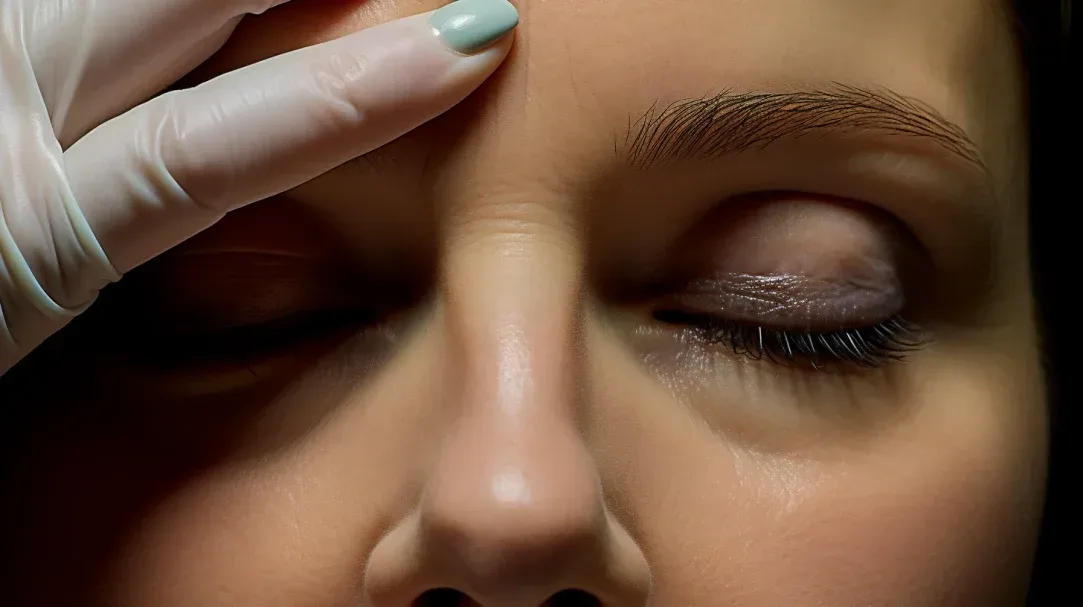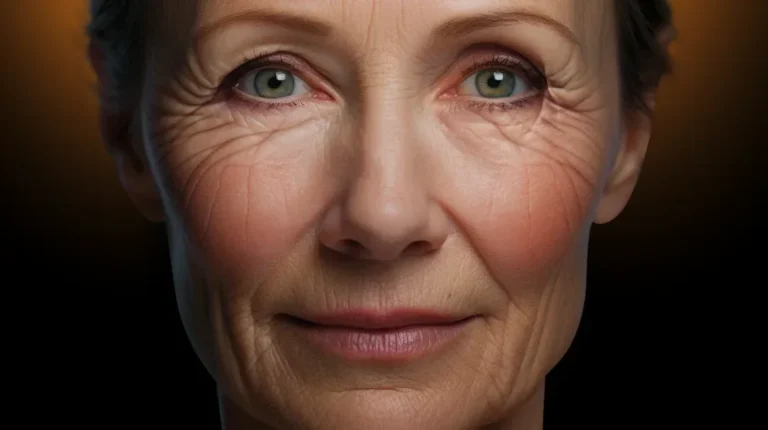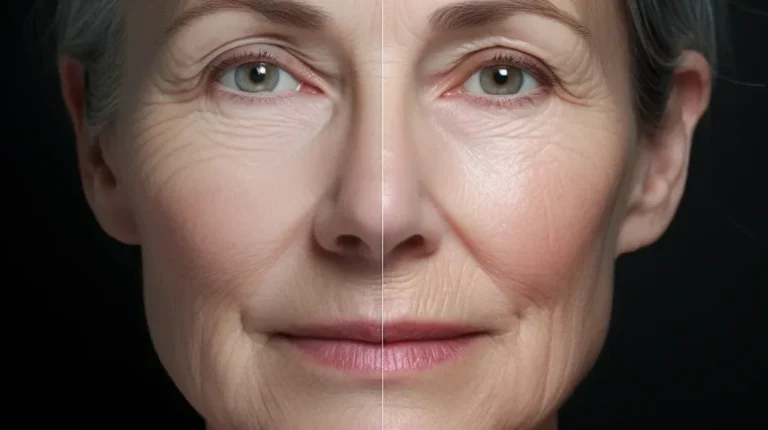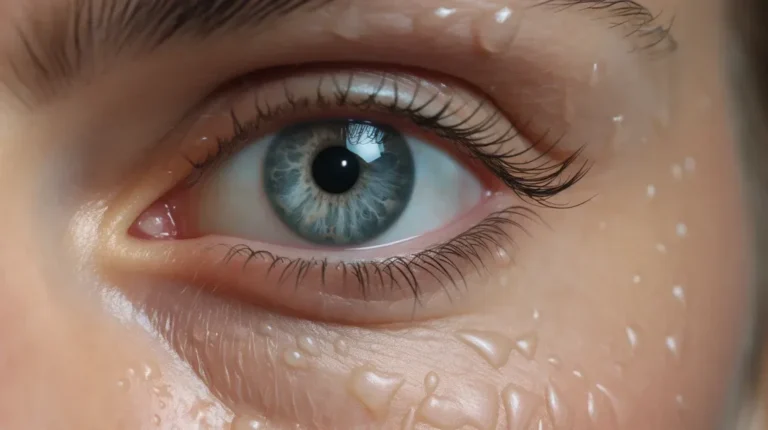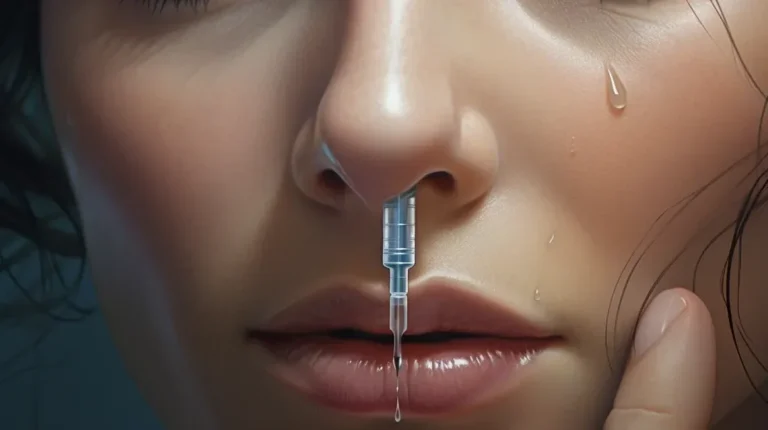What Is Botox? Exploring Definition & Uses
Are you curious about the popular cosmetic injection known as Botox? Wonder no more! In this article, we’ll uncover the Botox definition and uses of it, giving you a comprehensive understanding of this widely sought-after treatment.
Botox, or botulinum toxin type A, is a non-surgical procedure that temporarily relaxes muscles, reducing the appearance of wrinkles and lines.
But did you know it’s also FDA-approved for medical purposes like treating migraines and excessive sweating?
Whether you’re interested in cosmetic or medical applications, this article has you covered.
Key Takeaways Of “Botox Definition”
- Botox is commonly used for cosmetic purposes, such as treating facial wrinkles and forehead lines, but it also has medical applications.
- The mechanism of action of Botulinum toxin type A involves blocking nerve signals to muscles, leading to muscle relaxation and a reduction in wrinkles.
- Botox is chosen by a diverse range of patients, including younger individuals who use it as a preventative anti-aging measure.
- While Botox is generally safe, potential side effects can occur and are mitigated through proper injection techniques and adherence to safety guidelines.
The Mechanism of Action
Botox, a widely recognized cosmetic treatment, operates by inhibiting the communication between nerves and facial muscles, effectively diminishing muscle activity. This process, central to its ability to soften wrinkles and fine lines, involves botulinum toxin type A, a neuromuscular blocker.
Upon being administered into targeted facial areas, Botox strategically impedes the release of acetylcholine, an essential neurotransmitter in muscle contraction. This action relaxes the specified muscles, thus visibly reducing the signs of aging, such as crow’s feet, forehead lines, and other dynamic wrinkles.
The rejuvenating effects of Botox are not permanent but generally endure for several months, offering a temporary solution for a youthful appearance. Significantly, Botox’s utility extends beyond aesthetic enhancements. It’s increasingly recognized for its therapeutic benefits in treating a range of conditions, including chronic migraines, hyperhidrosis (excessive sweating), and various neuromuscular disorders.
This comprehensive approach to understanding Botox highlights not only its cosmetic advantages but also its role in contemporary medical treatments, reflecting its multidimensional impact in the fields of dermatology and neurology.
Cosmetic Uses
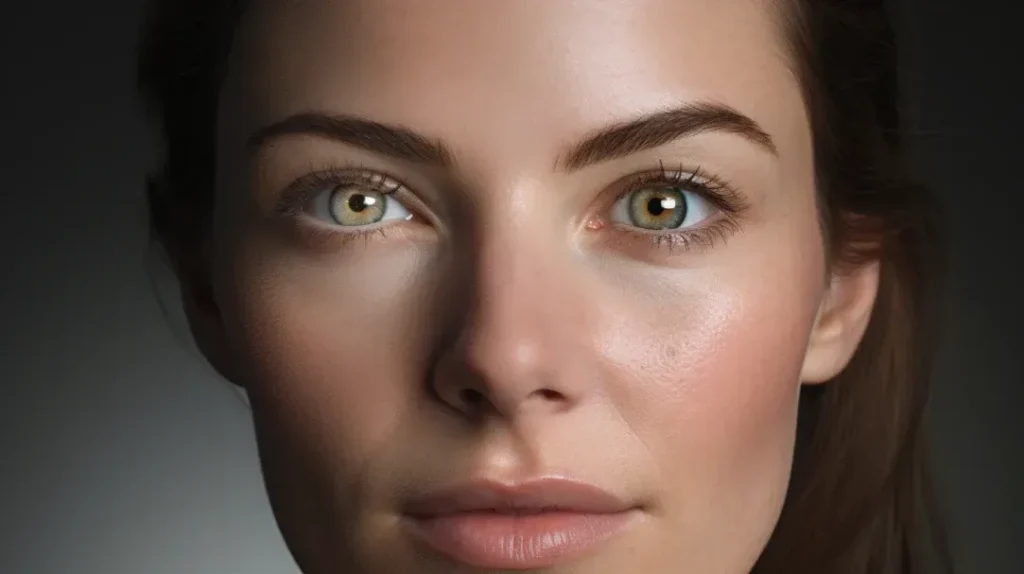
For those seeking to enhance their appearance and reduce the signs of aging, cosmetic uses of Botox provide a non-surgical solution. Botox injections are commonly used to treat facial wrinkles, offering a range of benefits:
- Smoothing out forehead lines and crow’s feet
- Providing a youthful and rejuvenated appearance
- Boosting self-confidence and self-esteem
- Offering a quick and convenient procedure
- Producing temporary results that can be tailored to individual needs
Botox is FDA-approved for cosmetic injections and is widely used in aesthetic dermatology. It works by temporarily relaxing facial muscles, reducing the appearance of wrinkles.
However, Botox also has a variety of medical applications. [Transition sentence: Now, let’s explore the medical applications of Botox.]
Medical Applications
Botox, widely renowned for its aesthetic applications, is increasingly harnessed by healthcare experts for its therapeutic benefits. This neurotoxin’s versatility extends to addressing a spectrum of medical issues, making it a pivotal tool in modern medicine.
Clinically, Botox is instrumental in alleviating symptoms of chronic migraines, a condition affecting millions globally. Its efficacy in reducing the frequency and intensity of migraine episodes has been well-documented. Additionally, Botox offers significant relief in hyperhidrosis, a condition characterized by abnormal excessive sweating, by temporarily halting sweat production.
Muscle-related disorders, including involuntary muscle spasms and stiffness, also benefit from Botox’s muscle-relaxing properties. Similarly, patients with overactive bladder conditions, experiencing frequent urination and incontinence, find substantial improvement with Botox treatments, as it aids in relaxing the bladder muscles.
Patient feedback often highlights the positive impact of Botox in these therapeutic contexts, noting substantial improvements in quality of life. However, the administration of Botox for medical purposes is a precise science and should be performed exclusively by qualified medical professionals in controlled clinical environments. This ensures not only the efficacy of the treatment but also prioritizes patient safety and optimal health outcomes.
In conclusion, Botox’s role in the medical field goes beyond skin-deep applications, positioning it as a critical component in treating a variety of challenging medical conditions, reflecting its evolving role in healthcare advancements.
Potential Side Effects
When considering Botox treatments, it’s essential to be aware of the potential side effects that can occur. While Botox is generally considered safe, there are a few side effects that you should be aware of:
- Temporary bruising or swelling at the injection site
- Headache or flu-like symptoms
- Drooping of the eyelid or eyebrow
- Dryness or excessive tearing of the eyes
- Rarely, more severe side effects, such as muscle weakness or difficulty swallowing
To ensure your safety, it’s crucial to choose a qualified healthcare provider who follows health regulations and uses proper injection techniques. They’ll also discuss any potential risks and side effects with you during your consultation.
Remember to disclose your medical history and any medications you’re taking to minimize the risk of complications.
Patient Demographics
When it comes to patient demographics, age, and gender play a significant role in preferences for Botox treatments.
Younger demographics are increasingly seeking Botox as a preventative measure against aging, while older individuals often use it to address existing wrinkles and lines.
Motivations for seeking Botox can vary, ranging from cosmetic desires to medical conditions such as migraines or excessive sweating.
Age and Gender Preferences
You may be wondering, ‘Who are the patients that prefer Botox based on their age and gender?’ Here are some key demographics to consider:
- Women in their late 20s to early 40s: These individuals often seek Botox as a preventative measure to address forehead lines and crow’s feet before they become more pronounced.
- Men in their 40s to 60s: This demographic commonly turns to Botox to reduce the appearance of forehead lines and crow’s feet, helping them maintain a more youthful and refreshed look.
- Younger adults: Increasingly, younger adults in their early 20s are opting for Botox as a way to prevent the formation of wrinkles and maintain smooth skin.
- Older adults: Individuals in their 60s and beyond often choose Botox to minimize the appearance of deep forehead lines and crow’s feet, helping them feel more confident and rejuvenated.
- Both men and women: Botox is a popular choice for individuals of all genders who desire a more youthful and vibrant appearance.
Understanding the age and gender preferences of Botox patients can provide valuable insights into the motivations for seeking Botox treatments.
Regulatory Landscape
Regulatory bodies consistently monitor and oversee the use of Botox, ensuring its safe and effective administration in various cosmetic and medical applications. These bodies play a crucial role in safeguarding patient health and maintaining industry standards.
Some critical aspects of the regulatory landscape for Botox include:
- FDA approval: Botox is approved by the U.S. Food and Drug Administration (FDA) for specific cosmetic and medical indications, ensuring that it meets rigorous safety and efficacy standards.
- Adherence to guidelines: Regulatory bodies provide guidelines and protocols for the proper storage, handling, and administration of Botox to ensure its safe use.
- Monitoring adverse events: These bodies closely monitor and investigate any reported adverse events associated with Botox use, taking necessary actions to protect patient safety.
- Compliance enforcement: Regulatory bodies enforce compliance with regulations and guidelines through inspections, audits, and penalties for non-compliance.
- Continuous evaluation: The regulatory landscape for Botox is dynamic, with ongoing evaluation of emerging evidence and new research to ensure the ongoing safety and efficacy of its use.
Advancements in Injection Techniques
Advancements in injection techniques have revolutionized the use of Botox. These techniques not only enhance patient comfort but also contribute to reduced downtime and faster recovery.
Improved precision and accuracy during treatment are critical benefits of these new techniques. With the use of innovative injection techniques, patients can experience more effective and efficient results from their Botox treatments.
Improved Precision and Accuracy
By adopting innovative injection techniques, you can now experience improved precision and accuracy when receiving Botox treatments. These advancements have revolutionized the way Botox is administered, ensuring optimal results and patient satisfaction.
Here are five reasons why these injection techniques are worth considering:
- Targeted Approach: The use of advanced injection techniques allows for precise targeting of specific muscles, minimizing the risk of over-treatment or under-treatment.
- Reduced Discomfort: The refined techniques enable a more comfortable experience during the procedure, with less pain and minimal bruising.
- Natural-Looking Results: The improved precision ensures that Botox is administered in a way that maintains your natural facial expressions and avoids a frozen or artificial appearance.
- Enhanced Safety: The use of specific injection sites and techniques helps minimize the risk of complications, ensuring a safe and effective treatment.
- Faster Recovery: The advancements in injection techniques often result in a quicker recovery time, allowing you to resume your daily activities sooner.
With these advancements, you can have confidence in the precision and accuracy of your Botox treatments, resulting in a more satisfying outcome.
Enhanced Patient Comfort
Experience a more comfortable Botox treatment with advancements in injection techniques that prioritize your comfort and satisfaction. These techniques have been developed to enhance patient comfort during the non-surgical procedure.
Healthcare providers have refined their approach to ensure minimal discomfort during the injection process. The use of smaller needles, numbing creams, and precise injection sites contribute to a more pleasant experience. By prioritizing patient comfort, these advancements have improved satisfaction levels during Botox treatments.
The focus on enhancing patient comfort is an integral part of the overall goal to provide a positive and stress-free experience. With these advancements, you can feel more at ease during your Botox treatment, knowing that your comfort is of utmost importance.
This emphasis on patient comfort seamlessly transitions into the subsequent section about reduced downtime and recovery.
Reduced Downtime and Recovery
With advancements in injection techniques, you’ll experience reduced downtime and a faster recovery after your Botox treatment. This means you can get back to your daily activities sooner and enjoy the results of your treatment without extended downtime.
Here are some benefits of reduced downtime and faster recovery:
- Minimal disruption to your schedule
- Less time spent recovering and more time enjoying the results
- Increased convenience and flexibility
- Reduced discomfort and swelling after the treatment
- Improved overall satisfaction with the treatment experience
These advancements in injection techniques have made Botox treatments more efficient and effective, allowing you to achieve your desired results with minimal downtime. So, you can feel confident knowing that you can quickly resume your routine after your Botox treatment.
Cost and Treatment Frequency
Understanding the financial and scheduling aspects of Botox treatments is crucial in tailoring your unique cosmetic or therapeutic plan. The price of Botox injections typically fluctuates based on several factors, including the number of areas being treated and the proficiency of the administering medical professional. Generally, the cost ranges from approximately $200 to $600 per session, though these figures may differ based on geographical location and clinic reputation.
Regarding the frequency of treatments, it’s common for patients to undergo Botox sessions every 3 to 6 months to sustain optimal results. This interval allows for the maintenance of the aesthetic or therapeutic effects while adapting to the natural metabolic rate of the body. It’s imperative, however, to seek advice from a certified healthcare practitioner. A professional assessment ensures a treatment plan that is both safe and tailored to your specific needs, taking into account factors such as skin type, age, and treatment goals.
In addition to Botox, there are several alternative treatments available in the field of cosmetic and medical dermatology. These alternatives, ranging from dermal fillers to other neuromodulators, offer different benefits and may suit different individual requirements or preferences. Exploring these options with a healthcare expert can provide a comprehensive understanding of the best course of action for your personal health and aesthetic objectives.
This approach not only aligns with your unique requirements but also aligns with the latest advancements and best practices in cosmetics and treatments, offering a well-rounded perspective on managing your Botox regimen effectively.
Alternatives to Botox
Are you looking for natural alternatives to Botox?
There are several non-invasive wrinkle treatments available that can help reduce the appearance of facial lines and signs of aging.
From topical creams and serums to facial exercises and dermal fillers, exploring these options may provide you with alternative solutions for achieving a more youthful appearance without the need for injections.
Natural Anti-Aging Alternatives
If you’re seeking natural alternatives to Botox, consider incorporating more antioxidant-rich foods into your diet. Antioxidants help protect your skin from damage caused by free radicals, which can contribute to aging.
Here are some natural anti-aging alternatives to Botox that you can try:
- Hydrating your skin with moisturizers that contain ingredients like hyaluronic acid or glycerin.
- Use natural oils, such as argan oil or rosehip oil, to nourish and hydrate your skin.
- Try facial exercises to help tone and strengthen the muscles in your face.
- Getting enough sleep and managing stress, as lack of sleep and high stress levels, can accelerate the aging process.
- Protecting your skin from the sun by wearing sunscreen and avoiding excessive sun exposure.
These natural alternatives can help improve the texture and appearance of your skin without the use of Botox. However, it’s important to note that results may vary, and it’s always best to consult with a healthcare professional before starting any new skincare regimen.
When it comes to non-invasive wrinkle treatments, there are several options available.
Non-Invasive Wrinkle Treatments
When exploring non-invasive wrinkle treatments as alternatives to Botox, consider incorporating these options into your skincare routine. Non-invasive wrinkle treatments provide an effective and less invasive approach to reducing the appearance of wrinkles and fine lines. These treatments typically work by stimulating collagen production, improving skin elasticity, and smoothing out wrinkles without the need for injections or surgery. Some popular non-invasive wrinkle treatments include:
| Treatment | Description | Benefits |
|---|---|---|
| Chemical peels | Exfoliating treatment that removes dead skin cells | Improves skin texture and reduces the appearance of wrinkles |
| Laser resurfacing | Uses laser technology to stimulate collagen production | Smooths out wrinkles and improves skin tone |
| Microdermabrasion | Exfoliation technique that removes outer skin layers | Reduces the appearance of fine lines and wrinkles |
These treatments offer a viable alternative to Botox for those seeking non-invasive options. Transitioning into the next section, let’s now explore patient satisfaction and testimonials to gain a better understanding of the overall effectiveness of these treatments.
Future Trends and Innovations
The landscape of Botox treatments is evolving rapidly, driven by technological advancements, changing consumer preferences, and ongoing medical research. Here’s a look at some of the key future trends and innovations in the field of Botox:
- Growing Popularity Among Younger Demographics:
- Preventative Use: There’s an increasing trend of younger individuals opting for Botox as a preventive measure against the early signs of aging. This shift is changing the demographic profile of Botox users.
- Early Intervention: Starting treatments at a younger age can potentially reduce the development of deeper lines and wrinkles in the future.
- Advancements in Injection Techniques:
- Micro-Botox: The development of more refined injection techniques, such as micro-Botox, which targets the superficial layers of the skin for a more natural look.
- Precision Treatments: Enhanced techniques for more precise application, minimizing side effects and ensuring more consistent results.
- Expansion into Therapeutic Uses:
- Medical Applications: Beyond cosmetic uses, Botox is being increasingly used for medical conditions such as chronic migraines, excessive sweating (hyperhidrosis), and muscle spasticity.
- Research and Development: Ongoing research into new therapeutic applications of Botox, potentially expanding its use in various medical fields.
- Integration of Technology:
- Virtual Consultations: The adoption of telemedicine and virtual consultations for initial assessments and follow-up appointments.
- Personalized Treatment Plans: Leveraging technology to create more personalized and effective treatment plans based on individual facial analysis and patient preferences.
- Demand for Natural-Looking Results:
- Subtle Enhancements: A shift towards more subtle and natural-looking results as opposed to dramatic changes.
- Patient-Centric Approaches: Focusing on individualized treatments that align with the patient’s natural features and aesthetic goals.
- Market Expansion and Education:
- Consumer Awareness: Increased awareness and education about the benefits and safety of Botox treatments.
- Regulatory Advances: The potential for regulatory changes to accommodate new uses and technologies.
Frequently Asked Questions
Is Botox a Permanent Solution for Wrinkles and Fine Lines?
Botox is not a permanent solution for wrinkles and fine lines. It temporarily relaxes facial muscles, reducing their appearance. Results typically last 3-4 months. Consult a professional for personalized advice.
Are There Any Long-Term Side Effects of Botox Injections?
Long-term side effects of Botox injections are rare but can include muscle weakness, difficulty swallowing or breathing, and drooping eyelids. Consult with a healthcare provider to fully understand the potential risks and benefits.
Can Botox Be Used to Treat Medical Conditions Other Than Wrinkles?
Yes, Botox can be used to treat more than just wrinkles. It has medical applications for conditions like migraines, excessive sweating, and muscle spasms. Botox works by temporarily blocking nerve signals, providing relief.
What Are the Alternatives to Botox for Anti-Aging Treatments?
There are several alternatives to Botox for anti-aging treatments. These include dermal fillers, laser resurfacing, chemical peels, and microdermabrasion. Your dermatologist can help determine the best option for you.
How Often Do Patients Need to Undergo Botox Injections to Maintain Results?
To maintain results, you’ll need to undergo Botox injections every three to four months. This frequency ensures that the effects of the treatment remain consistent and your desired appearance is maintained over time.
Conclusion
In conclusion, Botox has become a popular cosmetic procedure due to its ability to temporarily reduce the appearance of wrinkles and lines by relaxing the muscles in the treated area.
However, it isn’t limited to cosmetic purposes and has also been approved for medical uses such as treating migraines and excessive sweating.
Interestingly, according to a recent survey, 92% of patients reported high levels of satisfaction with their Botox treatments, highlighting its effectiveness and popularity among those who choose this option.

